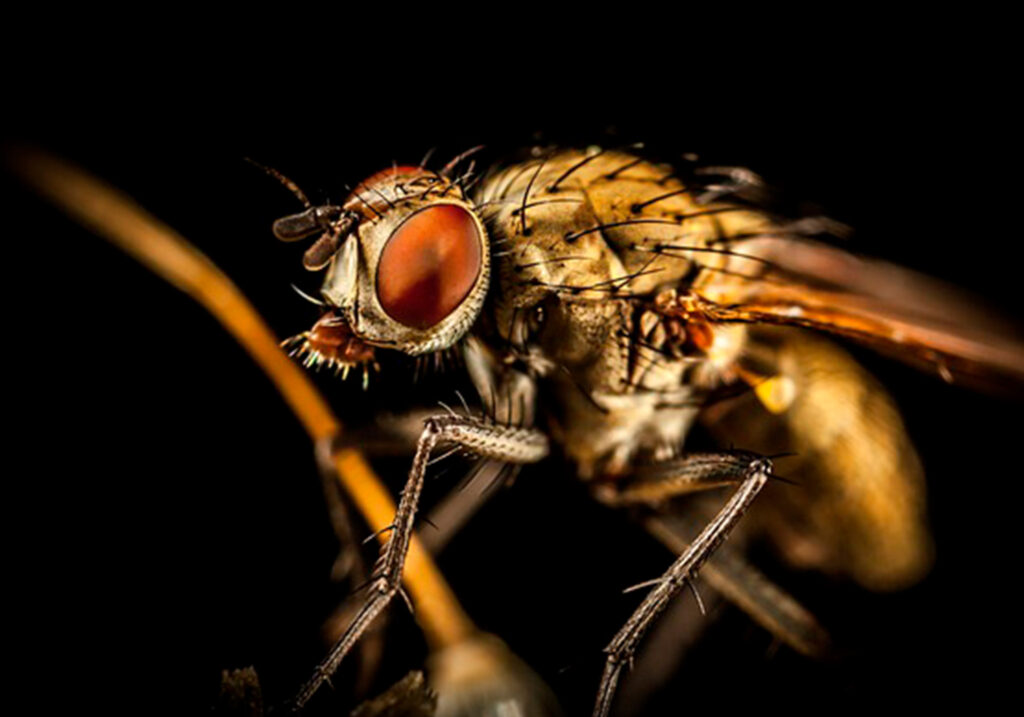Flies are pests that carry diseases. They can be seen anywhere there is filth. Not just that, but they are also irritating once they fly around your face! That is why getting rid of them by swatting is so satisfying.
Flies are a persistent challenge in barns as well, disrupting operations and posing significant risks to animal welfare and human health. The warm, humid environment of barns, combined with the abundance of organic material, provides an ideal breeding ground for these pests. However, with the right strategies and a commitment to maintenance, it is possible to effectively reduce fly populations and protect your barn. This guide delves into the dangers posed by flies, why they are attracted to barns, and actionable solutions for managing them.
The Problem with Flies in Barns
Flies are more than just an annoyance. Their presence can negatively impact both the health of animals and the productivity of barn operations. Understanding the scope of their effects highlights why managing fly populations is critical.
Flies are known carriers of various pathogens that can infect livestock. Biting flies, such as horse flies and stable flies, can transmit bloodborne diseases and cause painful bites, leading to stress and discomfort for animals. Meanwhile, non-biting flies, like house flies, can spread bacteria and viruses through contact with food, water, and open wounds. Common conditions such as mastitis in dairy cows or pinkeye in cattle often have links to fly infestations. These health issues not only reduce the quality of life for animals but also result in higher veterinary costs for farmers.
Beyond health risks, flies can also affect productivity. Livestock subjected to constant fly attacks may eat less, rest less, and produce less. For example, cows disturbed by flies may yield less milk, while poultry may lay fewer eggs. For workers, flies create an unpleasant environment, lowering morale and efficiency. In barns where humans and animals interact daily, flies can spread foodborne illnesses, contaminating surfaces and water supplies.
Why Flies Are Attracted to Barns
The key to managing flies lies in understanding why barns are so attractive to them. Barns provide an environment rich in food, shelter, and breeding sites, making them an ideal habitat for flies to thrive. Identifying and addressing these factors allows barn owners to create conditions that are less inviting to pests. By disrupting the conditions that flies rely on, it is possible to significantly reduce their presence and the problems they cause.
Manure is one of the primary reasons flies flock to barns. It serves as a perfect breeding ground, offering warmth, moisture, and nutrients essential for the development of fly larvae. Female flies lay their eggs in manure piles, which can result in rapid population growth if not managed effectively. Regular removal of manure and proper storage away from the barn can significantly disrupt this cycle, making it harder for flies to reproduce and multiply.
In addition to manure, animal feed and waste materials contribute to fly infestations. Spilled feed, dirty water troughs, and decaying organic matter provide an abundant food source for flies, attracting them in large numbers. The warm, humid conditions commonly found in barns, especially during summer, further exacerbate the issue. Flies are also drawn to the shelter provided by barns, which protect them from predators and harsh weather conditions. Together, these factors create a perfect storm for fly infestations, making proactive management essential for maintaining a healthy barn environment.
Maintaining Cleanliness in the Barn
A clean barn is the cornerstone of any successful fly control strategy. Regular cleaning and diligent waste management are critical for minimizing the food sources and breeding grounds that attract flies. Without proper maintenance, barns can quickly become hotspots for fly infestations, creating discomfort for animals and humans alike. By prioritizing cleanliness, barn owners can significantly reduce fly populations and create a healthier environment for all.
Manure removal is particularly crucial for disrupting the fly lifecycle. Manure serves as an ideal breeding ground for flies, providing warmth, moisture, and organic matter needed for eggs and larvae to thrive. To combat this, stalls should be cleaned daily, and manure must be promptly removed and stored away from the barn. Proper disposal methods, such as sealing manure in containers or composting it at a distance, can prevent flies from accessing it and laying eggs. Consistent manure management is one of the most effective ways to curtail fly reproduction and maintain control over their numbers.
Addressing other organic waste is equally important. Soiled bedding, spilled feed, and decaying plant material provide additional food sources and breeding sites for flies. Ensuring that these materials are removed and disposed of regularly is vital for limiting fly activity. Water troughs, another potential attractant, should be cleaned and refilled frequently to prevent algae and debris from accumulating, which can also draw flies. A clean barn not only deters fly infestations but also fosters better overall animal health, reduces stress, and enhances productivity by creating a more comfortable and sanitary environment.
Installing Physical Barriers
Physical barriers are an effective way to limit fly access to your barn. These measures help create a controlled environment that is less inviting to flies while maintaining essential ventilation.
Installing fine-mesh screens on windows, doors, and ventilation openings prevents flies from entering while allowing airflow to keep the barn cool and odor-free. Sealing cracks, gaps, and other potential entry points in walls and roofs also minimizes opportunities for flies to infiltrate the barn.
In high-traffic areas where doors need to remain open for extended periods, air curtains can be highly effective. These devices create a stream of air that flies find difficult to penetrate, ensuring that your barn remains protected without compromising accessibility.
Using Biological Control Methods
Biological control is a natural and environmentally friendly approach to managing fly populations. It involves introducing beneficial organisms that target flies at various stages of their lifecycle.
Fly parasites, such as parasitic wasps, are particularly effective in reducing fly populations. These tiny insects lay their eggs in fly pupae, preventing adult flies from emerging. Regular releases of these beneficial wasps can keep fly numbers under control over time.
Encouraging the presence of natural predators, such as birds, bats, and certain insect species, is another way to reduce flies. By creating habitats near your barn that attract these predators, you can achieve a balanced ecosystem that helps manage fly populations naturally.
Employing Chemical Control
While physical and biological methods form the backbone of fly management, chemical controls can provide additional relief, especially during peak fly seasons. However, it is crucial to use these products responsibly to avoid harming animals or the environment.
Fly baits and traps can be strategically placed around the barn to lure and kill flies. These tools work best when positioned near breeding areas, such as manure piles or feeding zones. Insecticides and sprays designed for use in livestock areas can also be effective but should be rotated periodically to prevent resistance. Always follow the manufacturer’s guidelines to ensure safety and efficacy.
When using chemical controls, prioritize selective application. Target problem areas rather than indiscriminately spraying large areas. This approach minimizes the environmental impact and reduces the risk of chemical exposure to animals and workers.
Preventing Fly Infestations
Prevention is the best long-term strategy for managing flies in barns. By addressing environmental factors and implementing proactive measures, barn owners can reduce the likelihood of infestations.
Routine inspections are essential for early detection of fly activity. Look for signs such as fly clusters, maggots, or droppings, and take immediate action to address these issues. Regular monitoring allows you to intervene before infestations become severe.
Improving barn ventilation is another effective prevention method. Adequate airflow helps reduce humidity and odors that attract flies. Installing fans or ventilation systems can help maintain a drier and less inviting environment for pests. Combining these efforts with an Integrated Pest Management (IPM) plan ensures a comprehensive and sustainable approach to fly prevention.
Conclusion
Flies in barns are more than just a nuisance. They pose significant risks to animal health, productivity, and human well-being. However, with a combination of cleanliness, physical barriers, biological and chemical controls, and preventive measures, barn owners can effectively manage and reduce fly populations. Consistent effort, early intervention, and an integrated approach are key to maintaining a fly-free barn that promotes the health and productivity of your animals and the efficiency of your operations.

